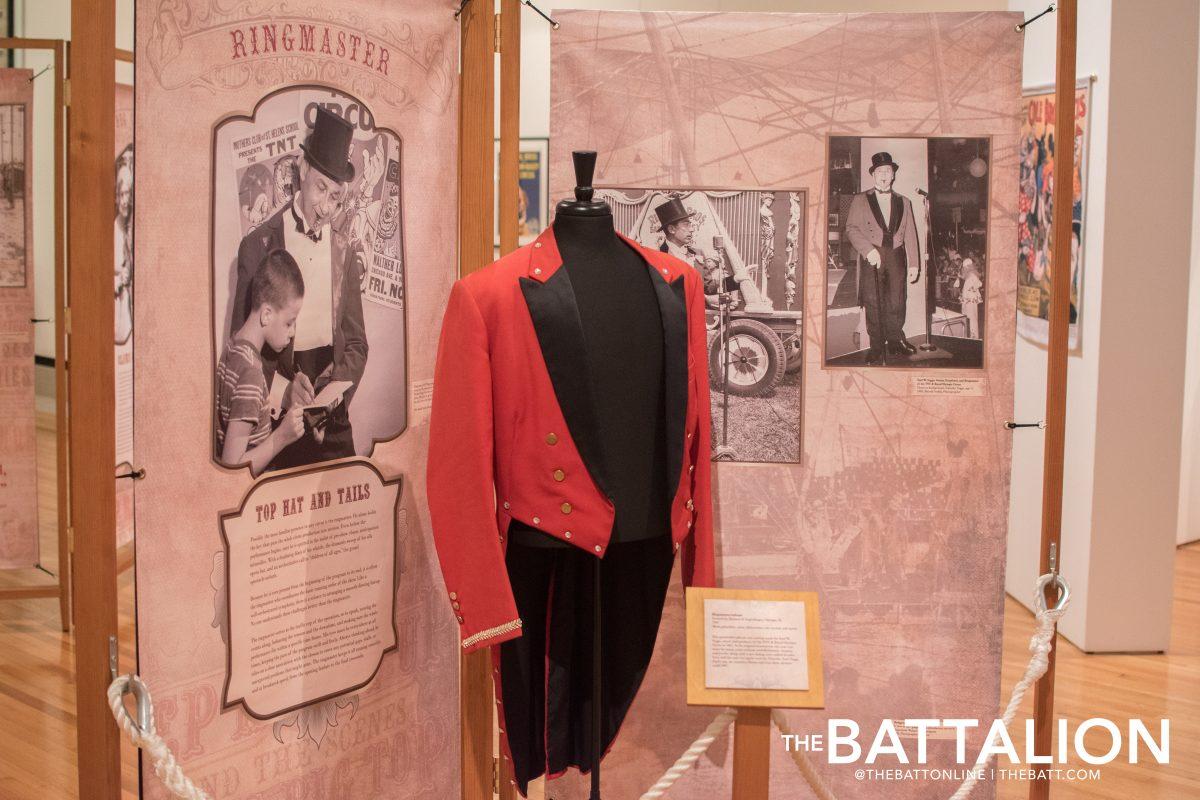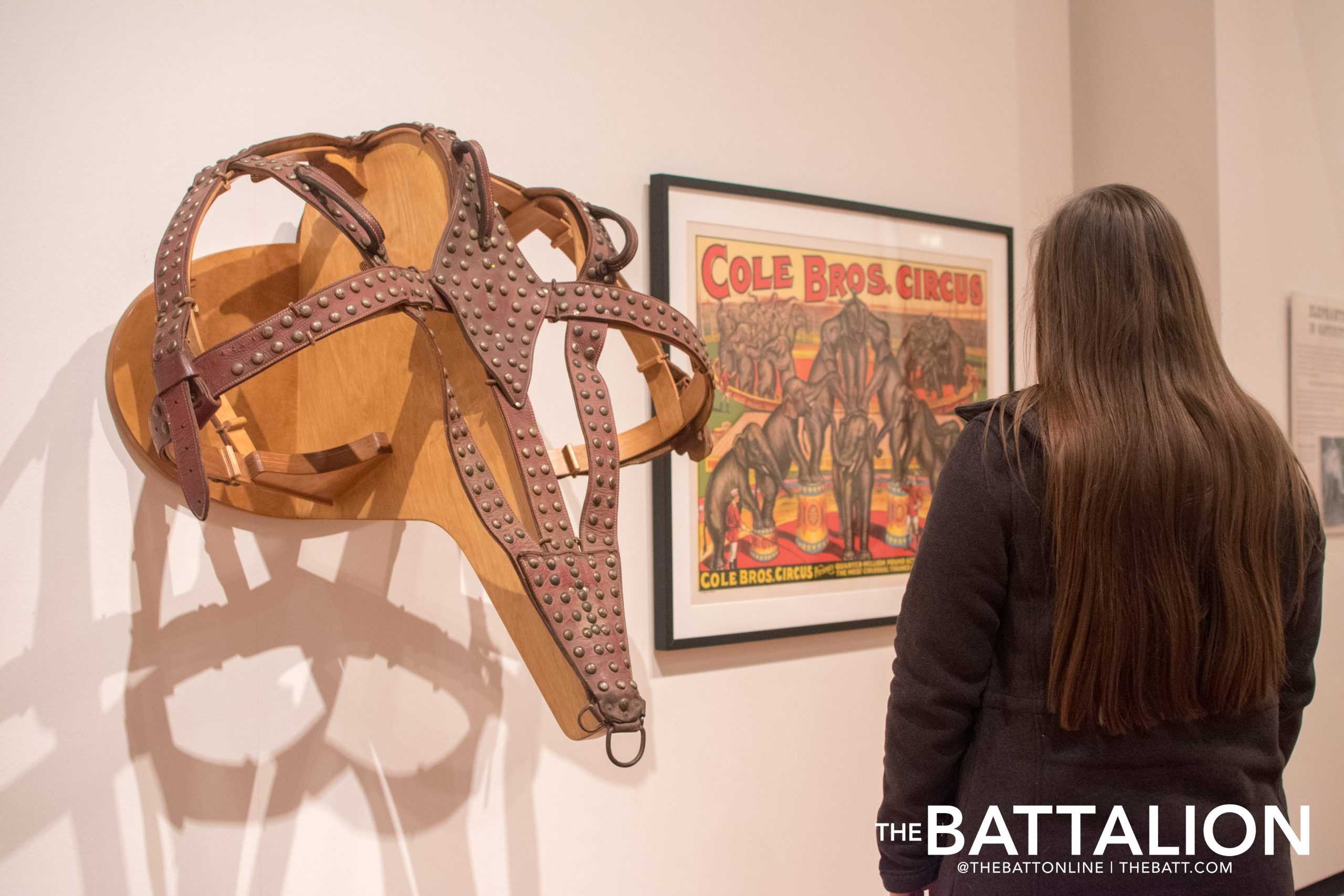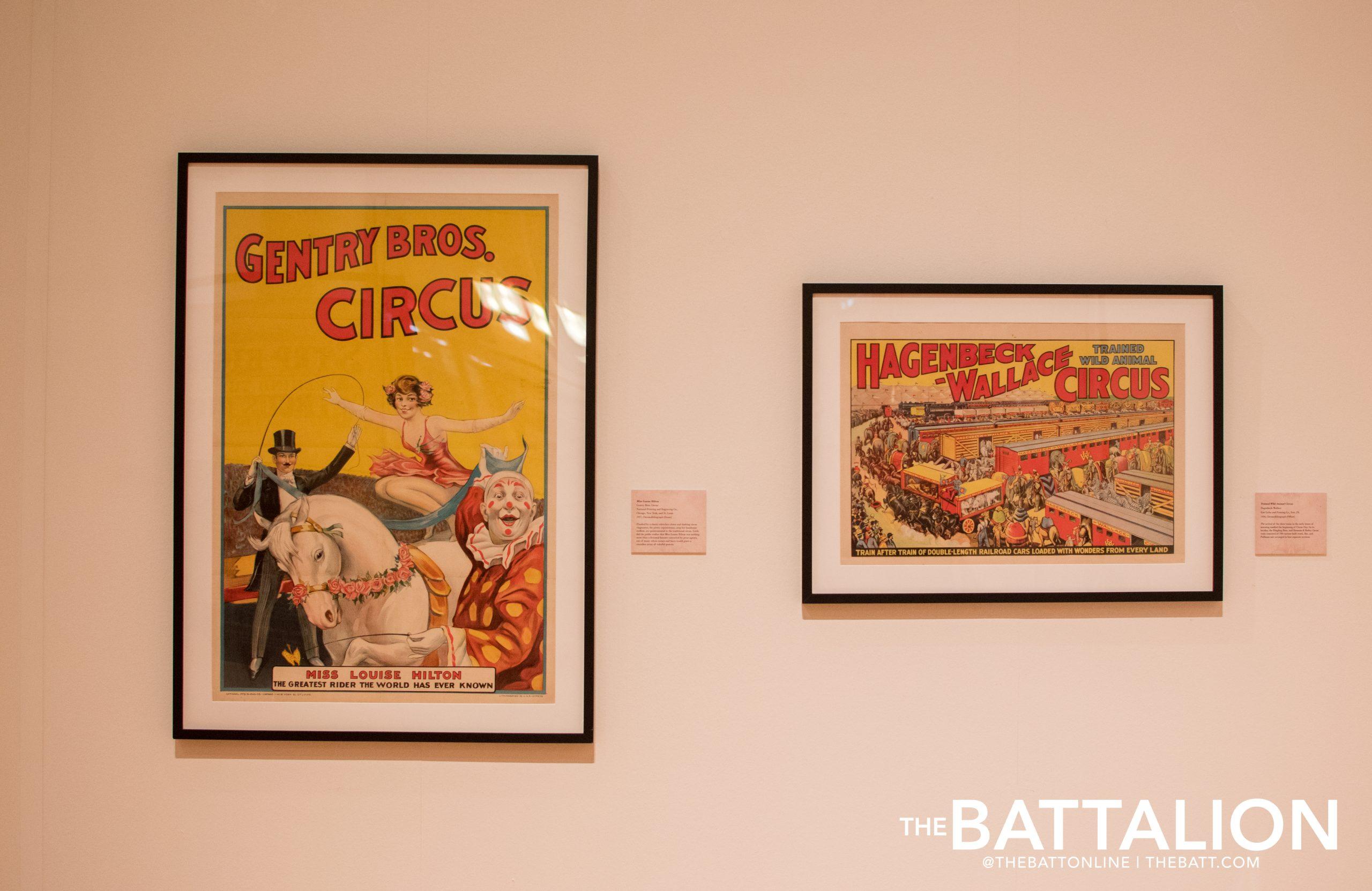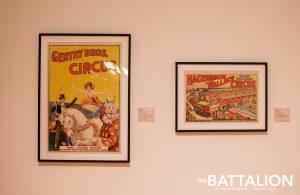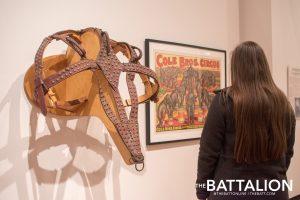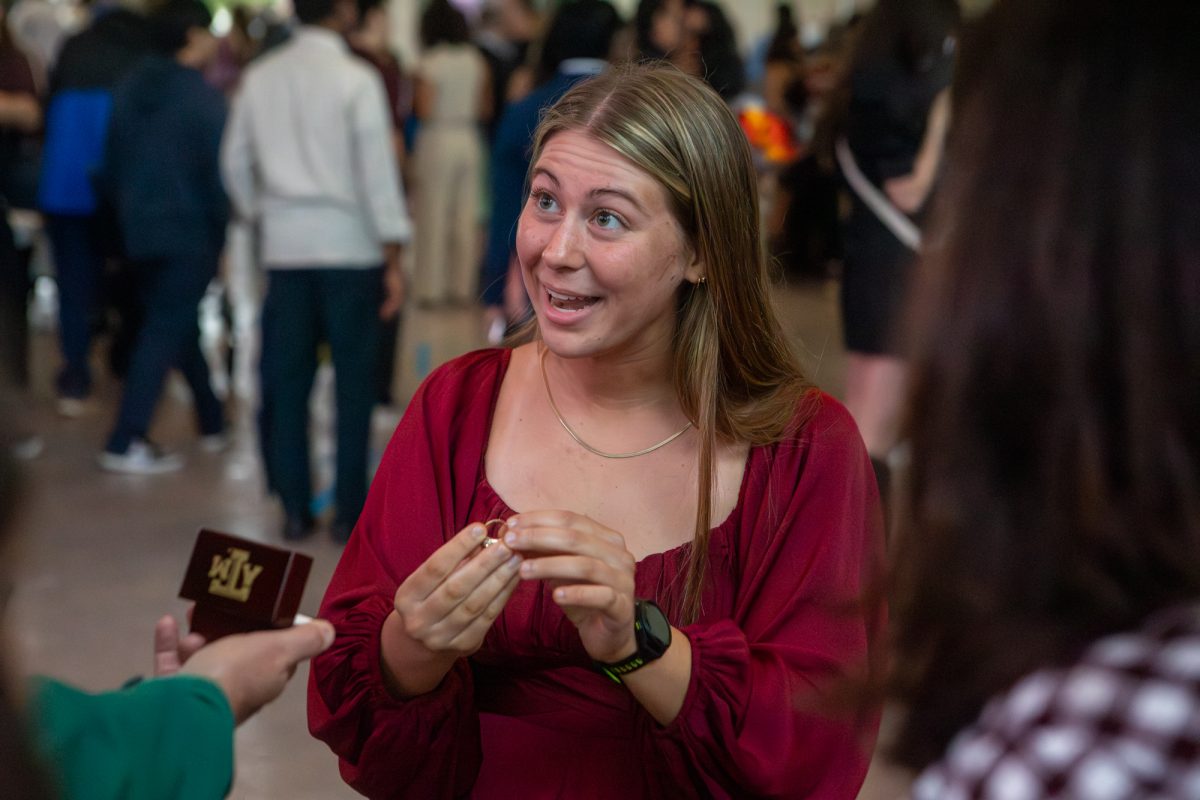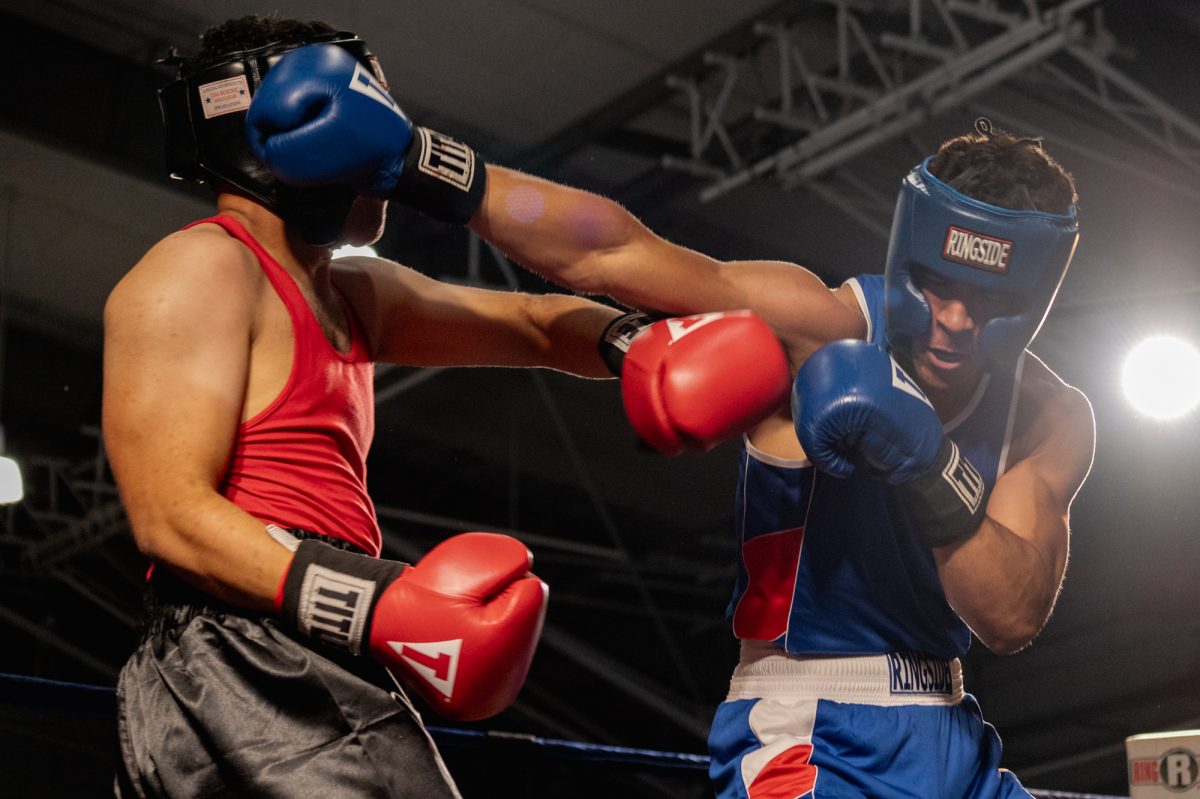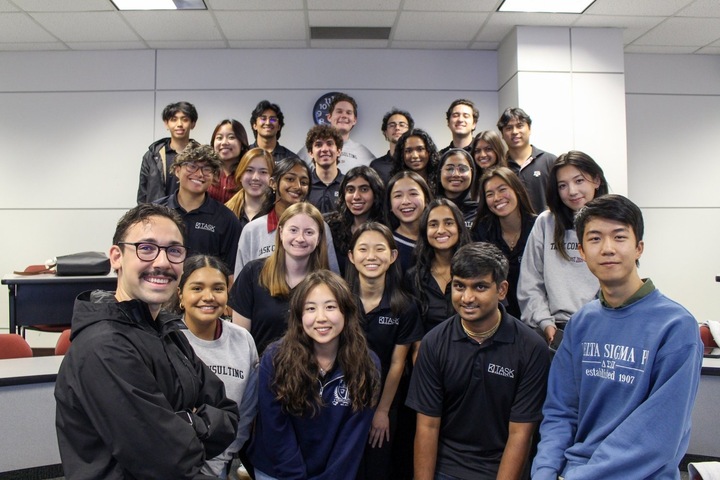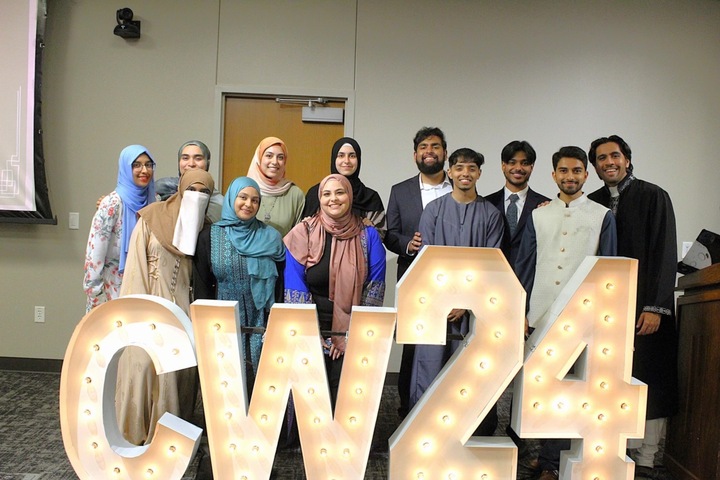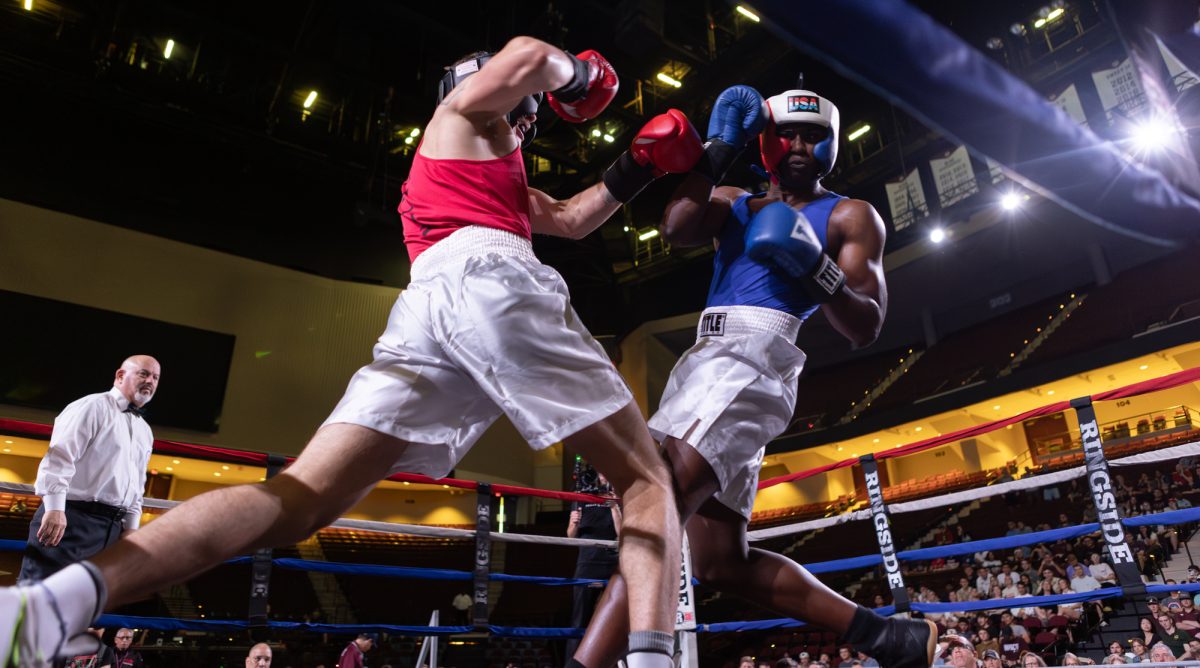Packed with colorful posters, photographs and costumes, the traveling Step Right Up! exhibit seeks to explore all facets of the circus, provide nostalgia and instigate an appreciation of the show.
Curated by variety entertainer Timothy Tegge, this exhibit will be on display until March 14 in the J. Wayne Stark Galleries in the Memorial Student Center at Texas A&M. Focusing on the time span of 1890 to 1965, Step Right Up! takes its viewers behind the scenes of the Big Top by featuring approximately 60 pieces of iconic memorabilia.
When Tegge was very young, his father left the business world and transitioned to show business, immersing Tegge in the circus world.
“By the time I was 3, my parents decided it would be a great idea to put me into clown makeup,” Tegge said. “I made my debut in show business at the age of 3 by riding behind my dad on my tricycle in one of his shows. I always tell people that by the age of 10, I knew what I was going to do with my life. To this day, I never regret having to go to work.”
Step Right Up! has been on the road for five years but will finish traveling after its time at A&M. Post-exhibition, the collection will be given back to Tegge to be used for future independent endeavors.
“It’s very important that this living history continues,” Tegge said. “All of these artifacts visually tell the story of the circus, and I feel like this should be shown to the public. The circus is a piece of our culture. It’s very romantic and very mystifying. I feel like I am only getting started.”
Until the exhibit closes, a series of programs will be held: a “Circus Music” presentation, Circus Camp, Tim Tegge’s public talk and walk-around, Texas Circus Tribute, a lecture titled “A Grand Aggregation of Wonders: America, Texas and the World at the Circus, 1793-1956” and Brownbag’s presentation of “Reminiscences of TAMU’s own Circus Re- searcher.”
Cathy Hastedt, director of J. Wayne Stark Galleries, said she thought the exhibit would interest students and evoke an understanding of history. Within the gallery, there is a wall specifically dedicated to Texas circuses.
“A lot of people don’t realize Texas was the headquarters for a lot of circuses, but a lot of them don’t exist anymore,” Hastedt said. “There was one in Gonzales, Texas, that was a community circus where anybody who lived in the community could be a part of it.”
Robert Harmel, political science professor, has his own personal collection of circus memorabilia. Recently, he began collecting photographs of presidents attending circuses, including one of George H.W. Bush “throwing his hat in the ring” for the presidency at a Ringling performance. Harmel, who also contributed to the Texas Circus section of the exhibit, said he believes that while the height of American circuses has passed, an audience for circuses will remain.
“Most of us have attended a circus performance at one time or another, and most of us will do so again sometime in the future,” Harmel said. “The exhibit gives context for those experiences. It not only gives some sense of the historical relevance of circus as an entertainment form in America, but also some of the flavor of circus life behind the scenes.”
Spotlight on the Big Top: Behind the scenes of the circus
February 7, 2018
Photo by Photo by Dalia Muayad
The J. Wayne Stark gallery is open for students to view until March 14.
0
Donate to The Battalion
$2165
$5000
Contributed
Our Goal
Your donation will support the student journalists of Texas A&M University - College Station. Your contribution will allow us to purchase equipment and cover our annual website hosting costs, in addition to paying freelance staffers for their work, travel costs for coverage and more!
More to Discover




